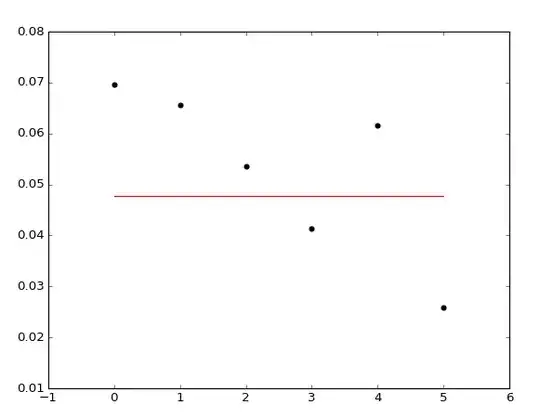I am trying to make a regression with SVR and I found a problem in the process, the regression with random data is ok, but I tried it with my data, and with all of these three kernels the prediction's output is constant (see the plot). Here is a piece of my data, maybe the problem is here, but I cant'see why.
data.csv
2006,46,97,97,0.04124
2006,47,97,97,0.06957
2006,48,115,97,0.06569
2006,49,137,115,0.05357
2006,50,112,137,0.04132
2006,51,121,112,0.06154
2006,52,130,121,0.02586
And here is the code I'm using.
import pandas as pd
from sklearn.svm import SVR
import matplotlib.pyplot as plt
import numpy as np
#Importing data
data = pd.read_csv('data.csv')
data = data.as_matrix()
#Random data generator
#datar = np.random.random_sample((7,21))
#inputdatar = datar[:,0:4]
inputdata = data[:,0:4]
output1 = data[:,4]
svr_rbf = SVR(kernel='rbf',gamma=1)
svr_rbf.fit(inputdata,output1)
pre = svr_rbf.predict(inputdata)
axis = range(0,data.shape[0])
plt.scatter(axis, output1, color='black', label='Data')
plt.plot(axis, pre, color='red', label='Regression')
plt.show()
I think maybe it's hyperparameter tuning problem, but I'm not sure if the data would cause a problem as well. Any lights?
